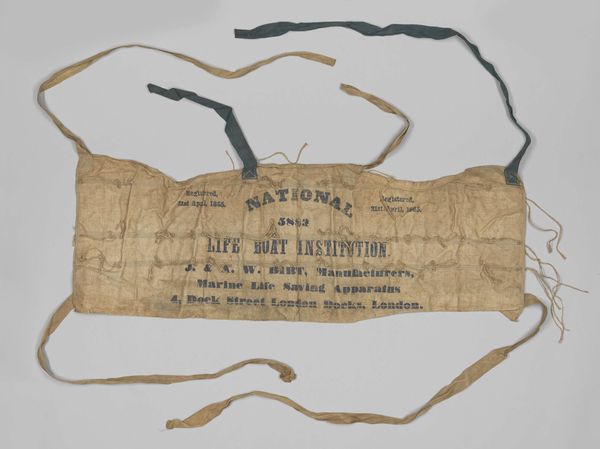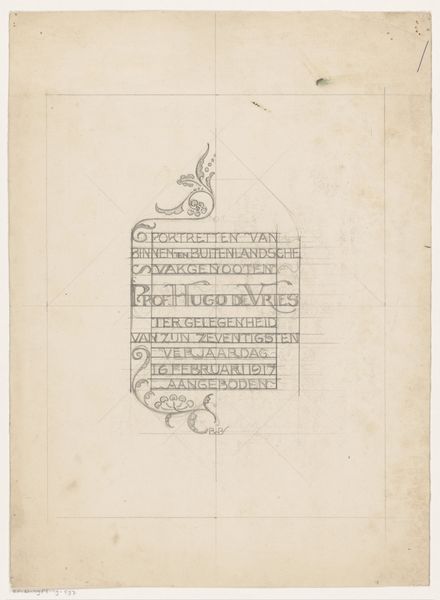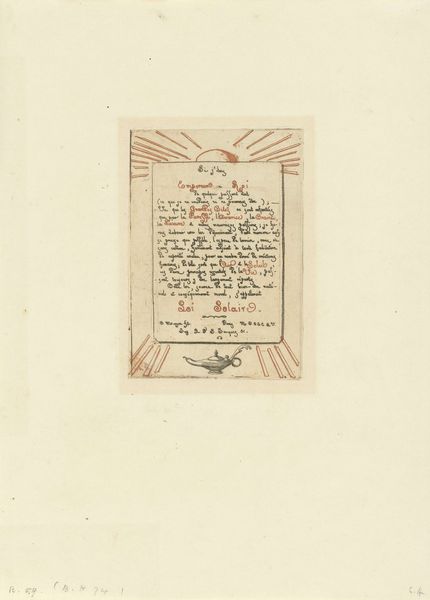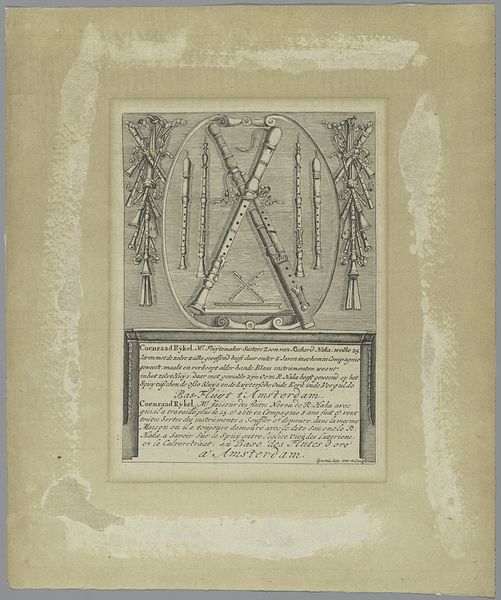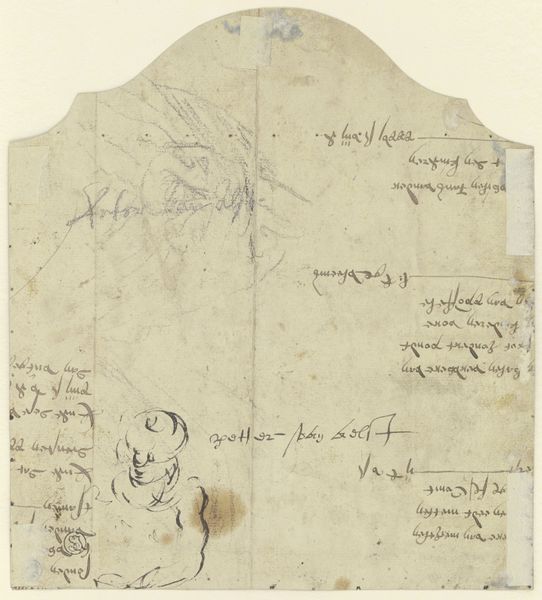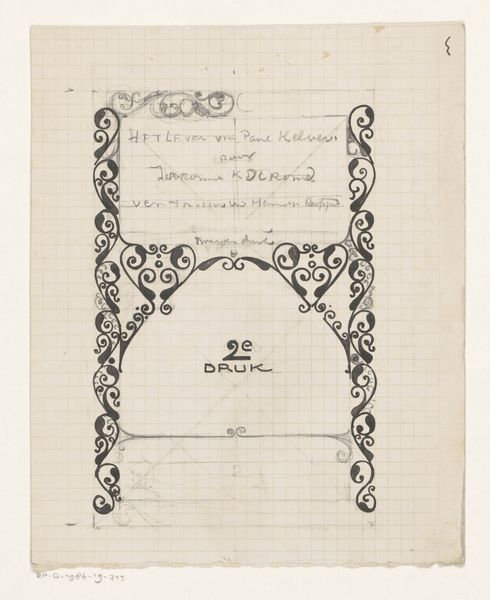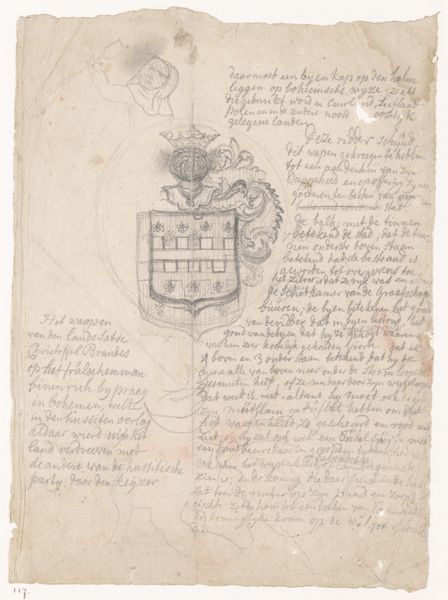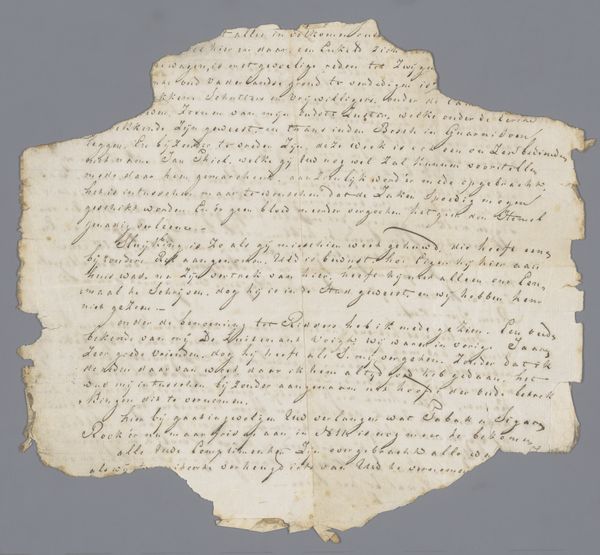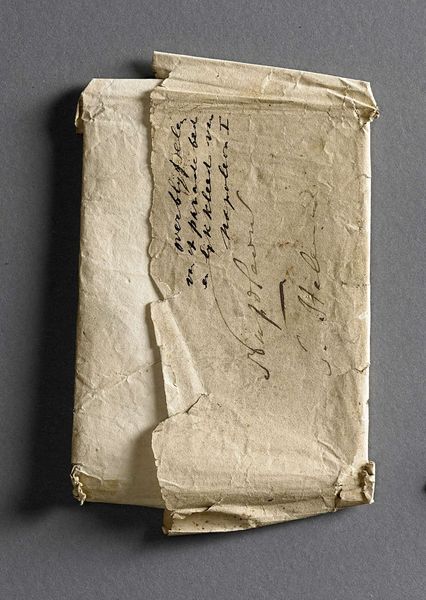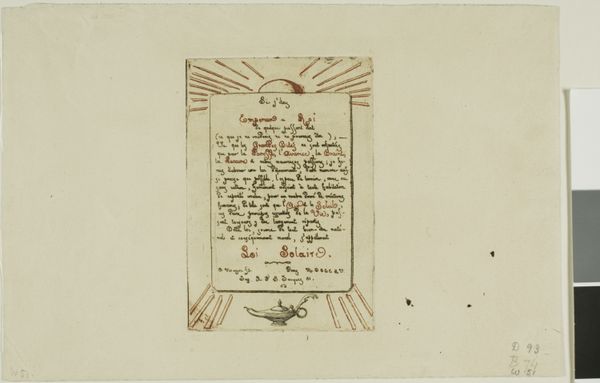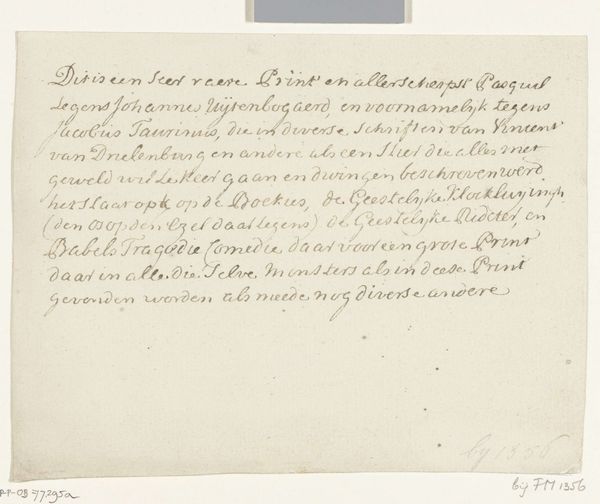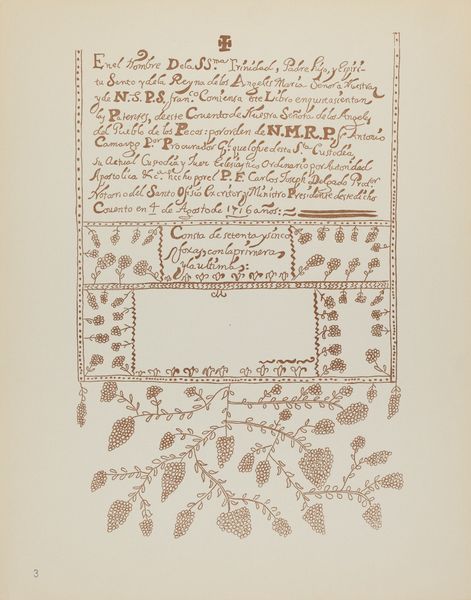
Verzegelde verklaring van herkomst van de drie ringen van ijzer van de kanonneerboot No.2 van J.C.J. van Speyk after 1831
0:00
0:00
drawing, paper, ink
#
drawing
#
narrative-art
#
paper
#
ink
Dimensions: length 10.6 cm, width 19.3 cm
Copyright: Rijks Museum: Open Domain
Curator: Oh, this document…it's rather unassuming at first glance, isn’t it? “Verzegelde verklaring van herkomst van de drie ringen van ijzer van de kanonneerboot No.2 van J.C.J. van Speyk"—that’s the title, a sealed declaration, after 1831, drawn in ink on paper, by A. Klerck. Tell me, what leaps out at you? Editor: Well, immediately, a sort of… melancholy stillness. The delicate line work against the declaration's formality speaks volumes. The brittle ribbon tie is like a tether to a violent past, almost like a faded memory. It’s an official document of a profoundly personal sacrifice, bound by fragility and loss. Curator: Precisely! It attests to the origins of three iron rings from Jan van Speyk’s gunboat. Van Speyk, a Dutch Lieutenant, famously blew up his own ship in 1831 rather than surrender it to Belgian insurgents during the Belgian Revolution. Editor: Yes, a potent symbol of Dutch national identity then… a defiant act of self-destruction elevated to heroic status. This declaration becomes a bureaucratic act that legitimizes that narrative, encoding a moment of intense political and military tension. You see this official account obscuring the chaos and trauma through administrative language. Curator: And signed by Klerck, passed from one officer to another—a tangible piece of that story. Knowing van Speyk’s choice, holding something connected to that moment… It makes you wonder what these iron rings witnessed. A narrative captured in metal, transferred to ink, preserved on paper. Editor: It underscores how nations construct myths around acts of violence and how documents become instruments of that construction, carefully managing and controlling history's emotional aftermath. Who gets to write these narratives, and what are the politics of memorialization in times of conflict? Curator: A heavy weight, isn't it? To be a silent observer to the forging of national myths. What begins as a simple declaration morphs into a powerful statement. Editor: Exactly! We started with melancholy and now, we ponder political memory! It always ends up here, right?
Comments
No comments
Be the first to comment and join the conversation on the ultimate creative platform.
